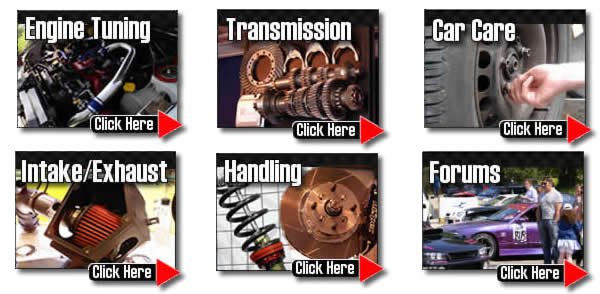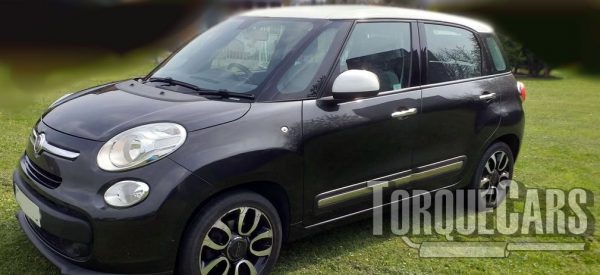Fiat 500L Tuning
"Thanks for reading my 500L tuning guide."
A mini MPV that sold really well across Europe, came with a wide choice of engines. The 1.4 Turbojet Multiair Turbo and diesels are lively and respond very well to mods.
We review and look at 500L tuning and show the best mods that work. Fiat 500Ls offer good returns when tuned and with a few sensible tuning upgrades you can enhance your driving fun.
The 500L is a good car tuning project to carry out. We see people often wasting money on their 500L doing the wrong mods and then having to start over. Follow our hints to avoid wasting your money

Handling/Suspension upgrades
Improving the handling for many tuners first priority in your 500L tuning project.
Fully adjustable suspension allows you to fine tune the handling of you 500L substantially improving your drive.
We would go to a maximum drop of 26mm - 45 mm on most models. You risk compromising your handling if you go lower than this.
Top end power should be your overall aim on the 500L with a nice fat peak torque band.
Sadly with smaller engine sizes you are wasting your time spending money on modifications, so if this applies to you get yourself an engine swap then apply the following mods.

Engine tuning mods.
Engines offered on the 500L chassis
- 0.9 L TwinAir Turbo I2 80 PS (59 kW; 79 hp) at 5,500 rpm
- 0.9 L TwinAir Turbo I2 105 PS (77 kW; 104 hp) at 5,500 rpm
- 1.4 L Fire I4 95 PS (70 kW; 94 hp) at 6,000 rpm
- 1.4 L Fire Turbojet I4 120 PS (88 kW; 120 hp) at 5,000 rpm
- 1.4 L Multiair Turbo I4 162 PS (119 kW; 160 hp) at 5,500 rpm
Diesels
- 1.3 L MultiJet II I4 85 PS (63 kW; 84 hp) at 3,500 rpm
- 1.6 L Multijet I4 (105-120ps; 104 to 120 hp) at 3,750 rpm
Transmission
- 5-speed FPT C510 manual
- 6-speed FPT C635 manual
- 6-speed FPT C635 dual-clutch automatic
- 5-speed FPT C510 Dualogic semi-auto
- 6-speed Aisin AW60T-6F25 automatic
Typically these uprated modifications are usually carried out by our members, decide how far you want to go before you start.
Getting the best performance parts for your planned usage of the car is essential. Stage 3 motor sport mods just don't work well on the road difficult in stop start traffic.
Please watch our introduction Video tutorial to car tuning. Be sure to subscribe and support our new channel.
How to tune your car
- Improve the handling
Focus on Suspension improvements, such as coilovers and make sure the bushings are in good order and that the alignment is correct. Then focus on improving the brakes, with a big disk brake conversion kit and fast road brake pads.
- Remove restrictions
Focus on the intake and exhaust with filters being the common point of restriction in a tuned car. Intercoolers may also become restrictive on turbo engines so this may also need to be uprated.
- Burn more fuel & air
Increase the fuelling so it matches the air coming into the engine. The ratio is important so you need to improve the fuel pump and injectors, so the head mods, big valve conversions, fast road camshafts and forced induction upgrades extra supply of air is adequately met.
- Test and replace any weak parts
Weak areas are commonly the clutch, the turbocharger and pistons and crankshaft in a highly tuned engine. Makes sure these components will cope with your power aspirations.
- The Tune or Remap
A cars ECU controls the fuel, timing, spark and even the turbo in some cases, so to fully extract your gains you should remap the car last and this will fully release the power. Some cars are easy to map, and others require piggyback ECU's or aftermarket ECU's but this is the most vital step of your tuning project.
Modifying to Stage 1:
Alloy wheels, Suspension upgrade (drop 30-40mm), Lighter flywheel, Sports exhaust, Panel air filter, Remap.
Modifying to Stage 2:
high flow fuel injector, Power/Sport clutch, Ported and polished head, Fast road cam, fuel pump upgrades.
Modifying to Stage 3:
Engine balancing, Sports gearbox, Competition cam, Internal engine upgrades (pistons/head/valves), Adding or upgrading forced induction (turbo/supercharger).
Peak power is nice in motorsport but for a drivable and fun car you need a long power band and perhaps extending the rev range.
In this article we shall give your a good starting base to the best upgrades for your car, but we'd encourage you to spend some time on the site looking into the details of each type of performance part.Fast road cams offer one of the biggest bhp gains for your money as far as a stand alone uprated parts goes on a NASP engine.
The exhaust and intake flow play a large part in your cars power band, but be careful here, getting this wrong can upset the idle and make the car impossible to drive in traffic. You'd need to follow a camshaft upgrade with other mods and finish with a performance chip for the best performance gains.
When pushing up the power you will need to uprate to the fuelling. More power needs more fuel.
If you find you get flat spots and surges after your sports modifications you should check the fuelling and try a higher octane fuel as well. Larger injectors will enable you to supply sufficient fuel to the engine.
A fuel pump will only deliver a finite amount of fuel, so you may need to uprate this if your injectors are demanding more fuel.
Intake and Exhaust Tuning.
The next area for modification is the intake and exhaust. Air induction kits are only beneficial to add power if the cars air intake is restricted! Adding an induction kit to most standard engines will see NO POWER GAIN AT ALL. If you have heavily modified your engine and it's need for air INCREASES DRAMATICALLY then an induction kit is the answer and will help remove this restriction.
Derestricting the flow of air into the engine is the primary part of car tuners so get a better flowing air filter if you find that the car is running lean only if you find the car is running lean. Induction kits can sound great but due to the warm air in the engine bay they will not really increase power and usually rob you of power on most cars.
Sports exhausts can help equal out the flow of air through the engine. But if your exhaust is too large, ie: over 2.5 inches bore, you will lose a lot of the exhaust flow rate and end up lacking power and torque.
Head work including a gas flow (ported and polished) and 3 or 5 angle valve job will really help to release the potential of the engine. Your clutch can fail if it starts to fail and the standard clutches are only ever good for power gains of up to 45%. Fit a competition clutch to avoid power loss through the transmission. The best mods we would do for your 500L are a remap especially on a turbo, a fast road camshaft and sports exhaust, with a good air intakeNASP engines do not achieve big power gains if you remap them, unless you have done extensive modifications. With turbocharged engines this is another story. A remapped turbo will give phenomenal power gains and take full advantage of the strength of the block.
We've also seen some tuners toying with twin charging conversions and making some very high power hikes.
Despite the large cost involved adding forced induction to a NASP engine will give large power gains. Superchargers are generally easier to add than a turbo. Turbos provide boost in exponential proportion to rising engine speed and this can make mapping difficult.
It is more straightforward to map a supercharger because the boost is directly proportional to engine speed on a linear curve. Alternatively you could perhaps install water injection to minimise knock.
Alloy wheel upgrades.
Because alloy wheels are less heavy they improve performance and they will help to cool the brake disks. Get a good directional tread pattern tire to improve your handling and help improve traction on your 500L. It is worth noting that although they can look cool on the 500L big alloy wheels will actually decrease your performance. The larger you go the lower your acceleration will be - this to the change in your effective final drive ratio.
With this in mind aim to keep the overall rolling diameter of the wheel the OEM setup. In all cases without going over 16 inches.
For more information on Tuning your car please join us in our friendly forum where you can discuss 500L options in more detail with our 500L owners. It would also be worth reading our unbiased Fiat tuning articles to get a full grasp of the benefits and drawbacks of each modification.
Please help us improve these tips by sending us your feedback in the comments box below. We love to hear what our visitors have got up to and which mods work best for them on each model of car. Comments are used to improve the accuracy of these articles which are continually updated.
If you liked this page please share it with your friends, drop a link to it in your favourite forum or use the bookmarking options to save it to your social media profile.
Check out TorqueCars new YouTube channel, and see their awesome new content...
Feedback
Please use our forums if you wish to ask a tuning question, and please note we do not sell parts or services, we are just an online magazine.
Help us improve, leave a suggestion or tip
